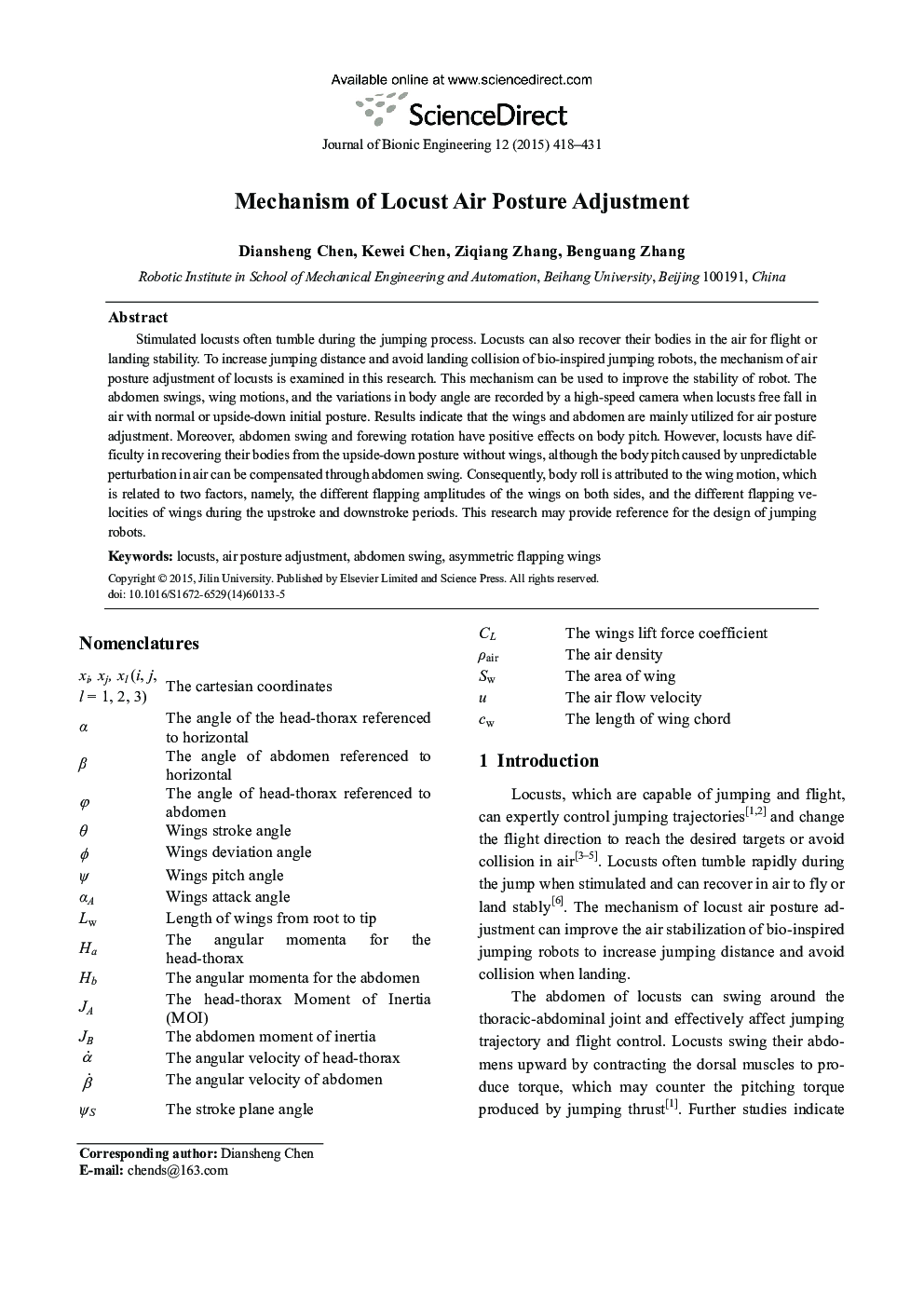| Article ID | Journal | Published Year | Pages | File Type |
|---|---|---|---|---|
| 826645 | Journal of Bionic Engineering | 2015 | 14 Pages |
Stimulated locusts often tumble during the jumping process. Locusts can also recover their bodies in the air for flight or landing stability. To increase jumping distance and avoid landing collision of bio-inspired jumping robots, the mechanism of air posture adjustment of locusts is examined in this research. This mechanism can be used to improve the stability of robot. The abdomen swings, wing motions, and the variations in body angle are recorded by a high-speed camera when locusts free fall in air with normal or upside-down initial posture. Results indicate that the wings and abdomen are mainly utilized for air posture adjustment. Moreover, abdomen swing and forewing rotation have positive effects on body pitch. However, locusts have difficulty in recovering their bodies from the upside-down posture without wings, although the body pitch caused by unpredictable perturbation in air can be compensated through abdomen swing. Consequently, body roll is attributed to the wing motion, which is related to two factors, namely, the different flapping amplitudes of the wings on both sides, and the different flapping velocities of wings during the upstroke and downstroke periods. This research may provide reference for the design of jumping robots.
